Authors:
ABSTRACT
Aim
A new index targeted on the risk of malocclusions in primary dentition, called Baby-ROMA (Risk Of Malocclusion
Assessment) index, was set up to assess risks/benefits in early orthodontic therapies. The Baby-ROMA index was designed from the
observation that some of the malocclusion signs, observed in primary dentition, can worsen with growth, others remain the same over
time and others can even improve. Therefore it would be important to classify the malocclusions observed at an early stage on a risk-
based scale.
Methods
The reliability of the index was tested on 200 children, referred by their paediatricians to
two different Orthodontic Departments, aged 4-6 years and in full primary dentition. The children were evaluated by two operators, both
trained and calibrated on the use of the Baby-ROMA index.
Results
The K test showed a high reproducibility of the index. It is
shown that 50 of patients presented malocclusion and crossbite had the highest prevalence, followed by tooth decay and early
loss of deciduous teeth and negative overjet.
Conclusion
The Baby-ROMA index was helpful to assess the severity of
malocclusion and the timing for orthodontic treatment in very young patients (primary teeth).
PLUMX METRICS
Publication date:
Keywords:
Issue:
Vol.15 – n.4/2014
Page:
Publisher:
Cite:
Harvard: C. Grippaudo, E. G. Paolantonio, F. Pantanali, G. Antonini, R. Deli (2014) "Early orthodontic treatment: a new index to assess the risk of malocclusion in primary dentition", European Journal of Paediatric Dentistry, 15(4), pp401-406. doi: https://www.ejpd.eu/pdf/EJPD_2014_4_13.pdf
Copyright (c) 2021 Ariesdue

This work is licensed under a Creative Commons Attribution-NonCommercial 4.0 International License.
